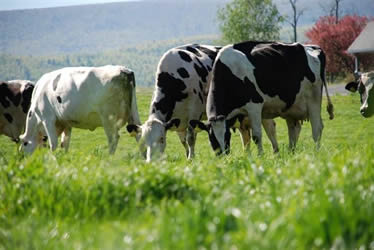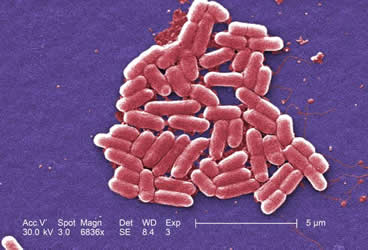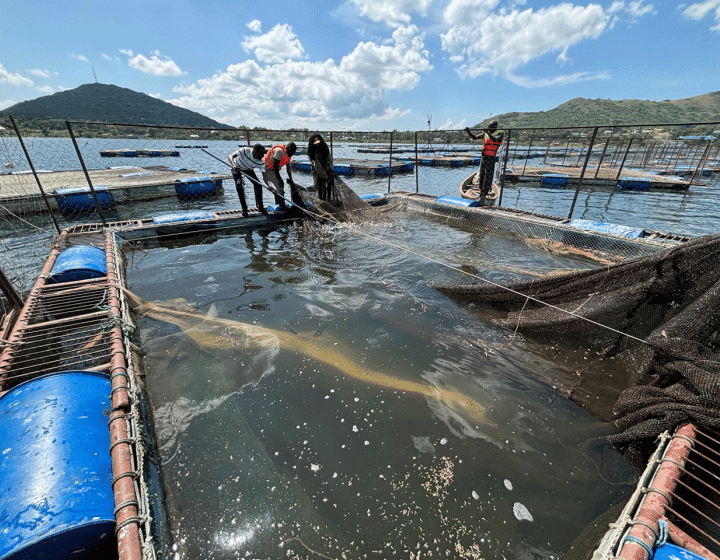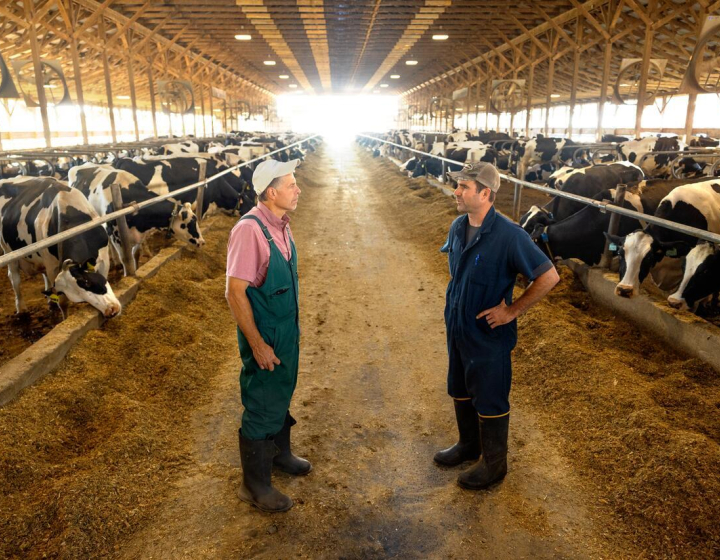Cornell researchers create first metritis vaccine to protect dairy cows
 One of the most common cattle diseases, metritis harms animal welfare, farmers’ profits, and public health, driving more systemic antibiotic use on dairy farms than any other disease.
One of the most common cattle diseases, metritis harms animal welfare, farmers’ profits, and public health, driving more systemic antibiotic use on dairy farms than any other disease.
Cornell scientists have created new vaccines that can prevent this infection of the uterus from taking hold and reduce its symptoms when it does, a prospect that could save the United States billions of dollars a year and help curb the growing epidemic of antibiotic resistance. Their results appeared in the journal PLoS One in March 2014.
Metritis develops after a cow gives birth, when bacteria take advantage of the open vagina and cervix to settle in the uterus. Infected cows suffer fever, pain, inflammation, lack of appetite, depression, and reduced reproductive abilities. Metritis affects as many as 25% of the roughly 9 million dairy cows in the United States, costing nearly $400 per case in lost productivity and treatment costs.
It is the number one cause of systemic antibiotic use, which floods the whole body with antibiotics rather than just a specific region. Three of the vaccines Bicalho’s lab created lowered metritis incidence and lessened its symptoms in the cows that received them, showing promise for alternatives to antibiotics in addressing the disease.
“Our lab has been developing a vaccine for years now based on our research of this disease,” said Dr. Rodrigo Bicalho, assistant professor of dairy production medicine at the College of Veterinary Medicine. “We created multivalent vaccines, complex cocktails with several components we’ve identified as important to causing metritis.”
For the first batch of the vaccine’s ingredients, Bicalho combined inactivated whole bacteria from each of the three species his lab has identified as the main causes metritis: Escherichia coli, Fusobacterium necrophorum, and Trueperella pyogenes.
For the second step, they used genomic analysis of these three bacteria to find genes that code for virulence factors— proteins bacteria use to cause disease. These included a toxin called leukotoxin that destroys white blood cells and tissue, another toxin called pyolysin, and a sticky protein called FimH which bacteria use to bind to their hosts. They inserted the genes that code for these proteins into Escherichia coli bacteria in the lab, using these lab bacteria as protein producing factories to make more virulence factors to put in the vaccine.
 They tested five combinations of these various ingredients and delivered three subcutaneously via a shot and two intravaginally. All three subcutaneous vaccines were effective, significantly reducing incidence of disease by up to 83%. Cows that were vaccinated with the subcutaneous vaccines had lower incidence of postpaurtum fever and puerperal metritis, shorter disease periods, and improved reproductive performance compared to those that did not receive the vaccines.
They tested five combinations of these various ingredients and delivered three subcutaneously via a shot and two intravaginally. All three subcutaneous vaccines were effective, significantly reducing incidence of disease by up to 83%. Cows that were vaccinated with the subcutaneous vaccines had lower incidence of postpaurtum fever and puerperal metritis, shorter disease periods, and improved reproductive performance compared to those that did not receive the vaccines.
“The powerful protection these vaccines produced surprised us—we expected some protective effect but nothing as strong as what we found,” said Bicalho. “An effective vaccine against uterine diseases will have a significant positive impact on the dairy industry, limiting the use of antibiotics, and decreasing economic losses due to these disorders. Our next step is to simplify the complex vaccines we created by identifying which components are the most important and removing the rest.”
Bicalho’s lab in collaboration with Merck Animal Health is working to move the vaccines toward USDA licensing, after which they should be made available for use. This research was funded by Merck Animal Health.





